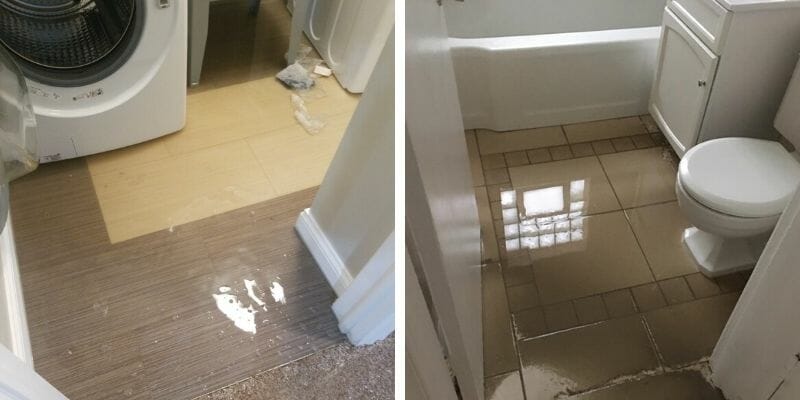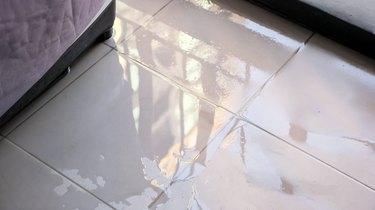Everybody has his or her own rationale on the subject of How to Repair and Prevent Bathroom Water Damage?.

Water damage typically occurs in the shower room as a result of the water made use of day-to-day. Sometimes, the damage could be a little mold from the shower. Other times, it's huge damage on your floor. Whatever it is, it is always great to know the cause and prevent it before it happens.
This guide will go through some of the common causes of water damage in the bathroom. We will also examine what you can do to prevent these reasons from harming your washroom. Allow's dive in.
These are the usual factors you would certainly have water damage in your washrooms and also just how you can identify them:
Excess Moisture
It's amazing to have that lengthy shower as well as splash water while you hem and haw and act like you're performing, but sometimes these acts could trigger water damage to your shower room.
Sprinkling water around can cause water to go to edges as well as form mold and mildews. Enjoy exactly how you spread excess dampness around, as well as when you do it, clean it up to prevent damages.
Fractures in your wall floor tiles
Shower room wall tiles have actually been specifically developed for that purpose. They secure the wall surface from moisture from people taking showers. Nonetheless, they are not undestroyable.
Often, your shower room wall floor tiles fracture and enable some moisture to permeate into the wall. This might possibly destroy the wall surface if you don't take any kind of action. If you notice a fracture on your wall surface tiles, repair it right away. Do not wait until it destroys your wall surface.
Overflowing bathrooms and also sinks
As people, sometimes we make mistakes that could cause some water damage in the restroom. For instance, leaving your sink faucet on might create overruning and also damages to various other parts of the shower room with wetness.
Additionally, a damaged toilet can create overflowing. For example, a busted commode handle or other parts of the tank. When this takes place, it could damage the floor.
As quickly as you notice an overruning sink or toilet, call a plumber to help manage it quickly.
Burst or Dripping Pipelines
There are many pipelines carrying water to various parts of your washroom. Some pipelines take water to the toilet, the sink, the taps, the shower, and also many various other places. They crisscross the tiny area of the washroom.
Occasionally, these pipes can get rustic as well as ruptured. Other times, human activity might trigger them to leak. When this takes place, you'll discover water in the corners of your shower room or on the wall.
To identify this, look out for bubbling walls, mold and mildews, or mold. Call a specialist emergency situation plumber to fix this when it takes place.
Roofing Leaks
Often, the problem of water damage to the washroom may not come from the restroom. For instance, a roofing leakage can cause damage to the shower room ceiling. You can detect the damage done by looking at the water spots on the ceiling.
If you discover water spots on your ceiling, check the roof to see if it's harmed. After that, call a professional to help resolve the problem.
Final thought
Water damage to your shower room can be aggravating. However, you can handle it if you stop several of the reasons discussed in this guide. Call a specialist emergency plumber if you see any kind of serious damage.
How to Prevent Water Damage in Your Bathroom?
Water damage repair is an expensive, meticulous, and lengthy process. Unfortunately, bathrooms are the most susceptible rooms to water damage due to toilets, showers, and sinks. Pipes and fixtures wear out over time and are not immune to damage. But all is not lost, as there are ways to prevent water damage from occurring in your bathroom.
Check Your Plumbing
Nothing lasts forever, especially pipes, which can rust and begin leaking over time. You should periodically conduct pipe inspections and pay attention for any musty smells or water stains that may indicate you need water damage repair. Here are some things to check:
Frequently test valves for your toilet, shower, and sink to ensure they are properly working. Check faucet supply lines hidden under vanities and replace when needed. Replace cracked or deteriorating caulking along sinks, tubs, and showers. If you notice a clog in your sink, call in a professional. Since you can’t check the pipes in the wall, keep an eye out for stains, drywall bubbling, musty smells, and excess moisture; if the bathroom is on a second level, check the ceiling of the room directly below for these signs. Don’t Overwork Your Toilet
One of the most common reasons bathrooms need water damage repair is due to overflowing toilets. Save yourself the hassle of cleanup by being mindful and not pushing your toilet to extreme limits. If you have young children, it is especially important to keep an eye on them when they are in the bathroom and to teach them how to avoid clogging the toilet. Here are some more tips to help prevent your toilet from overflowing:
If you have a septic tank, only use septic-safe toilet paper Do not flush anything down the toilet besides toilet paper; items like diapers and sanitary napkins will clog the piping Pay attention to your toilet’s water level: If it’s low, it could mean it is partially clogged or that there is a crack in the toilet bowl https://www.alure.com/home-improvements-blog/resources/how-to-prevent-water-damage-in-your-bathroom

We were brought to that write-up on How to Repair and Prevent Bathroom Water Damage? through a good friend on another website. Enjoyed our piece? Please share it. Help someone else locate it. Thanks a lot for your time spent reading it.
Book A Free Estimate